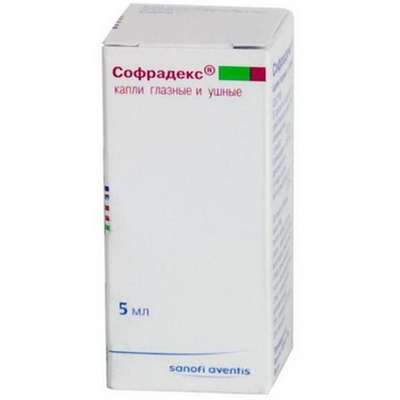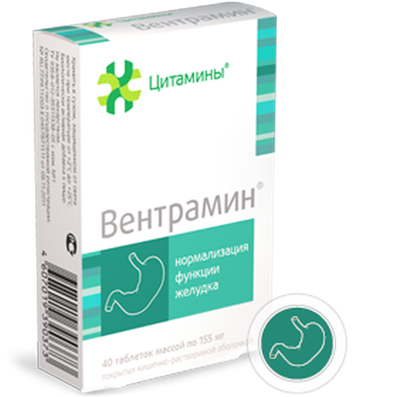Instruction for use: Xenon
I want this, give me price
Latin name: Xenonum (genus. Xenoni)
Pharmacological group of substance Xenon
Anesthetic means
The nosological classification (ICD-10)
I21 Acute myocardial infarction: Myocardial infarction in acute period; Myocardial infarction acute; Myocardial infarction with pathological Q wave and without it; Myocardial infarction complicated by cardiogenic shock; Left ventricular infarction; Myocardial infarction transmural; Myocardial infarction is nontransmural (subendocardial); Nontransmural myocardial infarction; Subendocardial myocardial infarction; Acute phase of myocardial infarction; Acute myocardial infarction; Subacute stage of myocardial infarction; Subacute period of myocardial infarction; Thrombosis of the coronary artery (arteries); Threatening myocardial infarction; Myocardial infarction without a tooth
I24.9 Acute ischemic heart disease, unspecified: Coronary heart disease; Coronary insufficiency; Acute coronary insufficiency; Acute coronary syndrome
K85 Acute pancreatitis: Acute pancreatitis; Pancreatitis; Pancreatitis hemorrhagic; Pancreatitis acute; Sepsis pancreatogenic; Acute necrotic pancreatitis; Pancreatitis edematous
R52.9 Unspecified pain: Pain after cholecystectomy; Pain shooting; Non-malignant pain syndrome; Obstetric and gynecological pain; Pain syndrome; Pain syndrome in the postoperative period; Pain syndrome in the postoperative period after orthopedic operations; Painful syndrome of inflammatory genesis; Pain syndrome of non-oncological genesis; Pain syndrome after diagnostic procedures; Pain syndrome after the diagnostic intervention; Pain syndrome after operations; Pain syndrome after surgery; Pain syndrome after orthopedic surgery; Pain syndrome after trauma; Pain syndrome after removal of hemorrhoids; Pain syndrome after surgery; Pain syndrome with inflammation of non-rheumatic nature; Pain syndrome with inflammatory lesions of the peripheral nervous system; Pain syndrome in diabetic neuropathy; Pain syndrome in acute inflammatory diseases of the musculoskeletal system; Pain syndrome in the pathology of tendons; Pain syndrome with smooth muscle spasms; Pain syndrome with smooth muscle spasms (renal and biliary colic, intestinal spasm, dysmenorrhea); Pain syndrome with spasms of smooth muscles of internal organs; Pain syndrome with spasms of smooth muscles of internal organs (renal and biliary colic, intestinal spasm, dysmenorrhea); Pain syndrome with injuries; Pain syndrome with injuries and after surgical interventions; Pain syndrome in chronic inflammatory diseases of the musculoskeletal system; Pain syndrome with duodenal ulcer; Pain syndrome with peptic ulcer disease; Pain syndrome with peptic ulcer of stomach and duodenum; Painful sensations; Pain during menstruation; Pain syndromes; Painful conditions; Painful leg fatigue; Gum pain when wearing dentures; The pain of exit points of cranial nerves; Painful irregular menstruation; Painful dressings; Painful muscular spasm; Painful growth of teeth; Pain; Pain in lower limbs; Pain in the area of the operating wound; Pain in the postoperative period; Pain in the body; Pain after diagnostic interventions; Pain after orthopedic surgery; Pain after surgery; Pain in the flu; Pain in diabetic polyneuropathy; Pain in burns; Pain in intercourse; Pain during diagnostic procedures; Pain during therapeutic procedures; Pain for colds; Pain with sinusitis; Pain in case of injury; Pain of a traumatic nature; Pain in the postoperative period; Pain after Diagnostic Interventions; Pain after sclerosing therapy; Pain after surgery; Postoperative pain; Postoperative and post-traumatic pain; Post-traumatic pain; Pain when swallowing; Pain in infectious inflammatory diseases of the upper respiratory tract; Pain with burns; Pain with traumatic muscle damage; Pain in case of injury; Pain when extracting a tooth; Pain of traumatic origin; Pain caused by spasm of smooth muscles; Severe pain syndrome; Severe pain syndrome of traumatic origin; Postoperative pain; Postoperative pain syndrome; Post-traumatic pain; Post-traumatic pain syndrome; Torpid pain syndrome; Traumatic pain; Moderate pain; Moderately expressed pain syndrome; Moderate pain syndrome; Polyartralgia in polymyositis
T79.4 Traumatic shock: Hemorrhagic shock; Crash Syndrome; Posthemorrhagic shock; Postoperative shock; Post-traumatic shock; Post-traumatic shock; Traumatic shock; Syndrome of hemorrhagic shock and encephalopathy
T88.9 Complication of surgical and therapeutic intervention, unspecified: Pain syndrome in the postoperative period; Pain syndrome in the postoperative period after orthopedic operations; Pain syndrome after diagnostic procedures; Pain syndrome after the diagnostic intervention; Pain syndrome after operations; Pain syndrome after surgery; Pain syndrome after orthopedic surgery; Pain syndrome after removal of hemorrhoids; Pain syndrome after surgery; Pain syndrome with an excimer laser; Pain syndrome with injuries and after surgical interventions; Pain syndromes in dental practice; Painful diagnostic interventions; Painful diagnostic manipulation; Painful instrumental diagnostic procedures; Painful instrumental manipulation; Painful treatment procedures; Painful manipulation; Painful dressings; Painful therapeutic interventions; Painful surgical interventions; Pain in the area of the operating wound; Pain in the postoperative period; Pain after diagnostic interventions; Pain after orthopedic surgery; Pain after surgery; Pain during diagnostic procedures; Pain during therapeutic procedures; Pain in orthopedics; Pain in the postoperative period; Pain after Diagnostic Interventions; Pain after sclerosing therapy; Pain after dental interventions; Pain after surgery; Postoperative pain; Postoperative and post-traumatic pain; Pain when extracting a tooth; Inflammation after surgery and trauma; Inflammation after orthopedic surgery; Inflammatory processes after surgical interventions; Inflammatory syndrome after surgery; Festering postoperative fistulae; Operating wound; Complications after tooth extraction; Postoperative pain; Postoperative pain syndrome; Postoperative pain
Z100.0 * Anesthesiology and premedication: Abdominal surgery; Adenomectomy; Amputation; Angioplasty of the coronary arteries; Carotid artery angioplasty; Antiseptic treatment of skin in wounds; Antiseptic treatment of hands; Appendectomy; Atheroctomy; Balloon coronary angioplasty; Vaginal hysterectomy; Venous bypass; Interventions on the vagina and cervix; Interventions on the bladder; Interference in the oral cavity; Reconstructive-reconstructive operations; Hand hygiene of medical personnel; Gynecological Surgery; Gynecological interventions; Gynecological operations; Hypovolemic shock during surgery; Disinfection of purulent wounds; Disinfection of the edges of wounds; Diagnostic Interventions; Diagnostic procedures; Diathermocoagulation of the cervix; Long-term surgeries; Replacement of fistulous catheters; Infection in orthopedic surgical interventions; Artificial heart valve; Kistectomy; Short-term outpatient surgery; Short-term operations; Short-term surgical procedures; Cryotyreotomy; Blood loss during surgical interventions; Bleeding during surgery and in the postoperative period; Kuldotsentez; Laser coagulation; Laserocoagulation; Laser retinopathy of the retina; Laparoscopy; Laparoscopy in gynecology; Likvornaya fistula; Small gynecological operations; Small surgical interventions; Mastectomy and subsequent plastic surgery; Mediastinotomy; Microsurgical operations on the ear; Mukinging operations; Suturing; Minor surgery; Neurosurgical operation; Eclipse of the eyeball in ophthalmic surgery Orchiectomy; Pancreatectomy; Pericardectomy; The rehabilitation period after surgical operations; Reconvalence after surgical intervention; Percutaneous transluminal coronary angioplasty; Pleural Thoracocentesis; Pneumonia postoperative and post traumatic; Preparing for surgical procedures; Preparing for a surgical operation; Preparation of the surgeon's arms before surgery; Preparation of the colon for surgical interventions; Postoperative aspiration pneumonia in neurosurgical and thoracic operations; Postoperative nausea; Postoperative hemorrhage; Postoperative granuloma; Postoperative shock; Early postoperative period; Myocardial revascularization; Resection of the apex of the tooth root; Resection of the stomach; Bowel resection; Resection of the uterus; Liver resection; Small bowel resection; Resection of a part of the stomach; Reocclusion of the operated vessel; Gluing of tissues during surgical interventions; Suture removal; Condition after eye surgery; Condition after surgery; Condition after surgery in the nasal cavity;Condition after gastrectomy; Condition after resection of the small intestine; Condition after tonsillectomy; Condition after removal of duodenum; Condition after phlebectomy; Vascular Surgery; Splenectomy; Sterilization of surgical instrument; Sterilization of surgical instruments; Sternotomy; Dental surgery; Dental intervention on periodontal tissues; Strumectomy; Tonsillectomy; Thoracic surgery; Total gastrectomy; Transdermal intravascular coronary angioplasty; Transurethral resection; Turbinectomy; Removal of a tooth; Cataract removal; Removing Cysts; Removal of tonsils; Removal of myoma; Removal of mobile milk teeth; Removal of polyps; Removal of a broken tooth; Removal of the uterus; Removal of seams; Urethrotomy; Fistula of the luminal ducts; Frontoetmoidohaimorotomy; Surgical infection; Surgical treatment of chronic ulcers of extremities; Surgery; Surgery in the anus; Surgery on the large intestine; Surgical practice; Surgical procedure; Surgical interventions; Surgical interventions on the digestive tract; Surgical interventions on the urinary tract;Surgical interventions on the urinary system; Surgical interventions on the genitourinary system; Surgical intervention on the heart; Surgical procedures; Surgical operations; Surgical operations on veins; Surgical intervention; Vascular; Cholecystectomy; Partial resection of the stomach; Extraperitoneal hysterectomy; Percutaneous transluminal coronary angioplasty; Percutaneous transluminal angioplasty; Coronary artery bypass grafting; Extirpation of the tooth; Extirpation of infant teeth; Extirpation of pulp; Extracorporeal circulation; Extraction of the tooth; Extraction of teeth; Extraction of cataracts; Electrocoagulation; Endourological interventions; Episiotomy; Ethmoidotomy; Complications after tooth extraction
Model clinical-pharmacological article 1
Pharmacotherapy. Means for inhalation anesthesia. In relation to oxygen (60:40, 70:30, 80:20) it has a miorelaxing, analgesic and anesthetic effect (more pronounced than in the dinitrogen oxide). The minimum alveolar concentration for xenon is 71%, dinitrogen oxide is 105%. After 2 minutes from the moment of inhalation, the stage of peripheral paresthesia and hypoalgesia occurs, for 3 minutes - the stage of psychomotor activity, for 4 minutes - the stage of partial amnesia and analgesia, for 5 minutes - the stage of anesthesia corresponding to the first level of the surgical stage of anesthesia with ether (according to Hydel). The parameters of hemodynamics and gas exchange during anesthesia are stable, spontaneous breathing is preserved. The way out of general anesthesia is fast. 2-3 minutes after the gas shutdown, consciousness returns with full orientation in space and time. Analgesia comes from the inhalation of 30-40% of the mixture with oxygen. Consciousness is lost with inhalation of 65-70% of the mixture with oxygen.
Pharmacokinetics. When inhaled, it is easily absorbed, the alveolar and arterial concentrations quickly equalize. It is discharged through the lungs in unchanged form after 4-5 minutes (after 2 minutes the residual alveolar concentration is 5%, after 5 minutes - 2%). In the next 4 hours there is a gradual, final elimination from the body.
Indications. Mask inhalation common monoanesthesia and combined endotracheal: interventions that do not require deep anesthesia and muscle relaxation (in surgery, operative gynecology, dentistry, painful manipulations, for pain anesthetics). Strengthening of narcotic and analgesic effects of other general anesthetics (including therapeutic analgesic general anesthesia in the postoperative period): pain syndrome, incl. acute coronary insufficiency, myocardial infarction, acute pancreatitis (cupping) and traumatic shock (prevention).
Contraindications. Hypersensitivity; diseases accompanied by hypoxia; surgical manipulations on the organs of the thorax.
Carefully. Diseases of the nervous system; chronic alcoholism (possibly the emergence of excitement and hallucinations).
Dosing. Inhalation, in the form of xenon-oxygen mixtures; the maximum concentration of xenon is 80%. The respiratory gas mixture is formed in the anesthesia apparatus. Depending on the nature of the operation or manipulation, a preset concentration of xenon and oxygen is established, under the control of rotameters and an oxygen analyzer installed on the inspiratory and exhalation channels. With masked monocomponent general anesthesia, it is necessary to achieve complete tightness in the system of the respiratory circuit, and upon reaching the surgical stage, use a laryngeal mask. In the endotracheal variant, the initial anesthesia is performed in combination with barbiturates or other drugs for IV general anesthesia (ketamine + diazepam, propofol), after which the muscle relaxant is injected and intubation is performed. After the transfer to the ventilator, 5 minutes of denitrogenation with 100% oxygen with a gas flow of 10 liters per minute and a minute volume of respiration of 8-10 liters per minute are made, along a semi-open circuit. After denitrogenation, a gas mixture of xenon and oxygen is established under the control of the gas analyzer and rotameters. At the end of the general anesthesia, the supply of xenon is turned off and the patient's lungs are ventilated for 4-5 minutes with an oxygen-air mixture for reliable elimination of xenon, using auxiliary ventilation. Extubation is performed at the appearance of the first signs of consciousness, provided that the spontaneous respiration is completely restored.
Side effect. Oxidation, "metallic" taste in the mouth, hypoxia.
Overdose. Symptoms: hypoxia.
Treatment: oxygen therapy, mechanical ventilation.
Interaction. Means for inhalation anesthesia, narcotic analgesics, anxiolytic (tranquilizers) and antipsychotic drugs (antipsychotics), antihistamine drugs enhance the effect.
Special instructions. With masked monocomponent general anesthesia, while preserving spontaneous breathing, the optimal variant of premedication is the use of anxiolytic drugs (tranquilizers). Xenon is in cylinders in gaseous form at a pressure of 50 atm. The amount of gas in the container is determined by weighing. 1 liter of gaseous xenon weighs 5.89 g.

 Cart
Cart





